Art World
When Art Is Subjected to the Elements in Gstaad
Commissions by Superflex, Nicole Wermers, and Douglas Gordon take over the Swiss resort town.
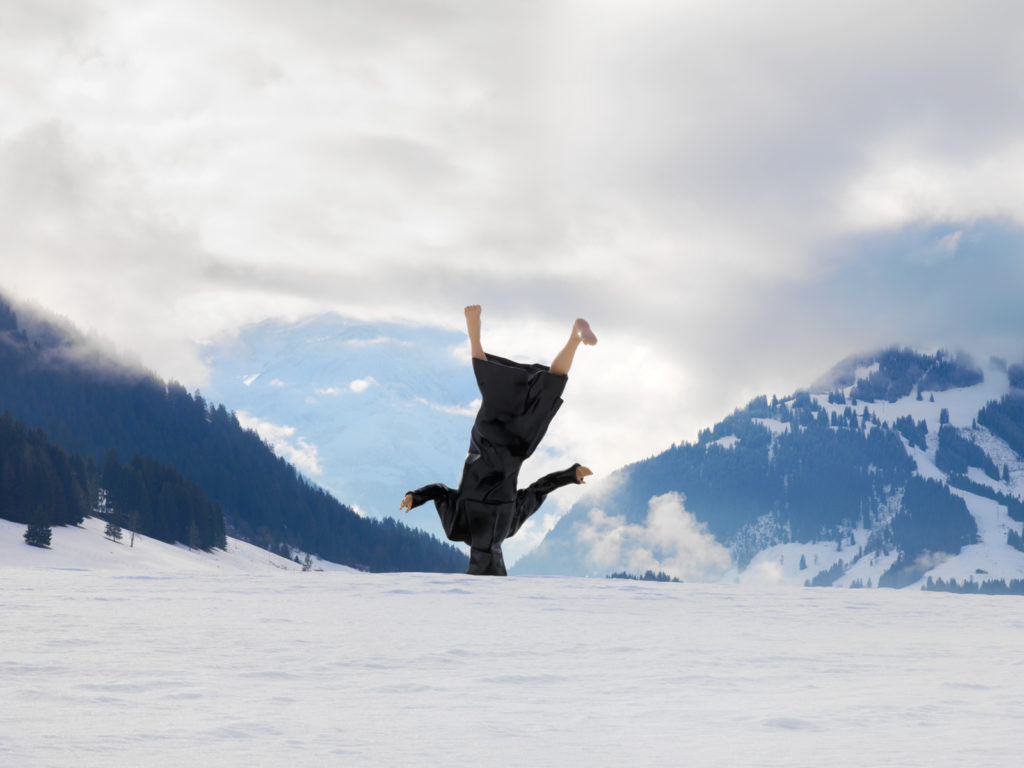
Commissions by Superflex, Nicole Wermers, and Douglas Gordon take over the Swiss resort town.

Ana Finel Honigman

“Imagine a town where bad things are rare, or perhaps, even nonexistent,” urges the voiceover for The Return of Pablo (2017). Superflex’s poetic video was screened in a wood barn during the opening of “Avalanche,” the second incarnation of Elevation 1049, the young exhibition series that takes place every two years in Gstaad, Switzerland.
The Return of Pablo will continue to subversively run on Gstaad’s mountain lift shuttle at the glacier, as if it was a visitors’ guide; which, in ways, it is. The video tells the story of an endangered bearded vulture named Pablo, who drops animal carcasses from great heights to extract the marrow from their bones. Superflex places Pablo’s plight in the context of ancient Greek mythology and Busy Town, the imaginary world of anthropomorphic animals employed as local functionaries created by Richard Scarry, the grandfather of artist and Elevation 1049’s co-curator, Olympia.
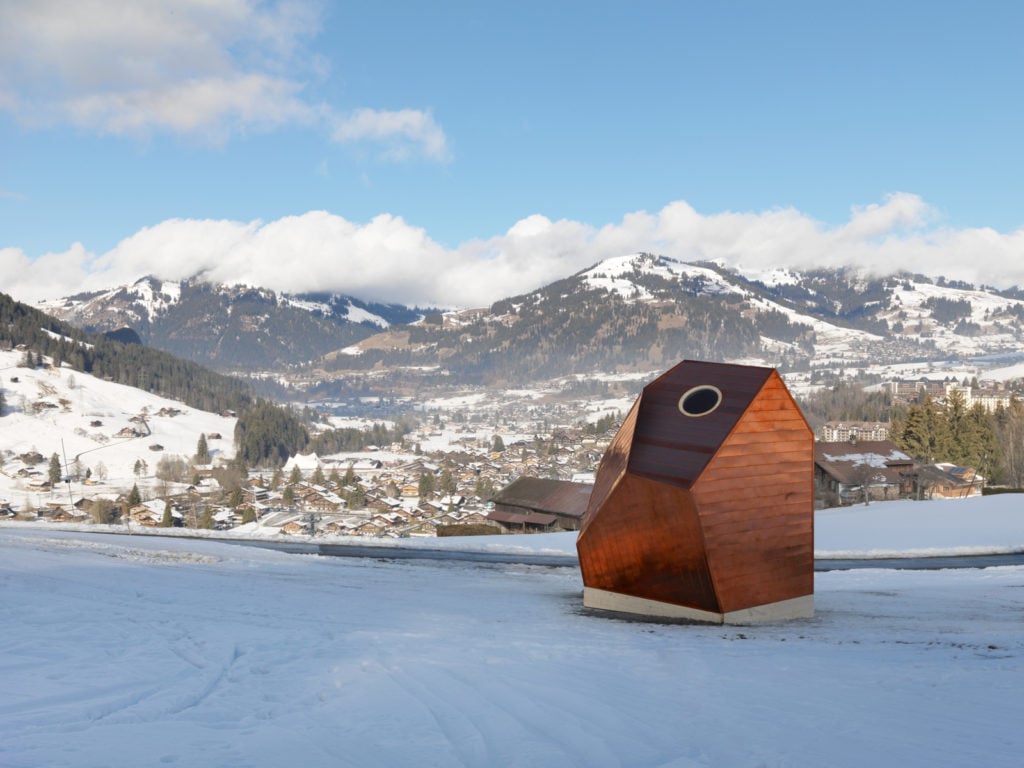
Thomas Schütte, Kristall II (2017). Courtesy of the artist and LUMA Foundation. Photo: Stefan Altenburger.
Anyone who was once a child knows that Busy Town was a suburban utopia (predators and prey found compromises and even Mayor Fox was scandal-free), but Gstaad hovers further from “bad things,” as the idyllic second home to 20th- and 21st-century titans, from Elizabeth Taylor, Brigitte Bardot, and Peter Sellers, to George Soros, Steve Wynn, and Madonna. In recent years, it has become the muse for Scarry and her co-curator, Neville Wakefield. Scarry and Wakefield dreamt up Elevation 1049 to merge the area’s iconic natural beauty with the town’s reputation as home for many of the world’s most significant private art collections.
Named after the geological coordinates of Gstaad (an altitude not high enough to affect perception, mood or health but still magnificent), Elevation 1049 is a biannual series of site-specific works using the area’s unique natural character and cultural significance as its inspiration. Produced by the LUMA Foundation and conceived by Scarry and Wakefield, Elevation 1049’s first ideation in 2014 was Between Heaven and Hell, a series of site-specific work by 22 Swiss artists who addressed climate change, global income inequality, and other issues removed from Gstaad’s cloistered mountains and luxury boutiques.
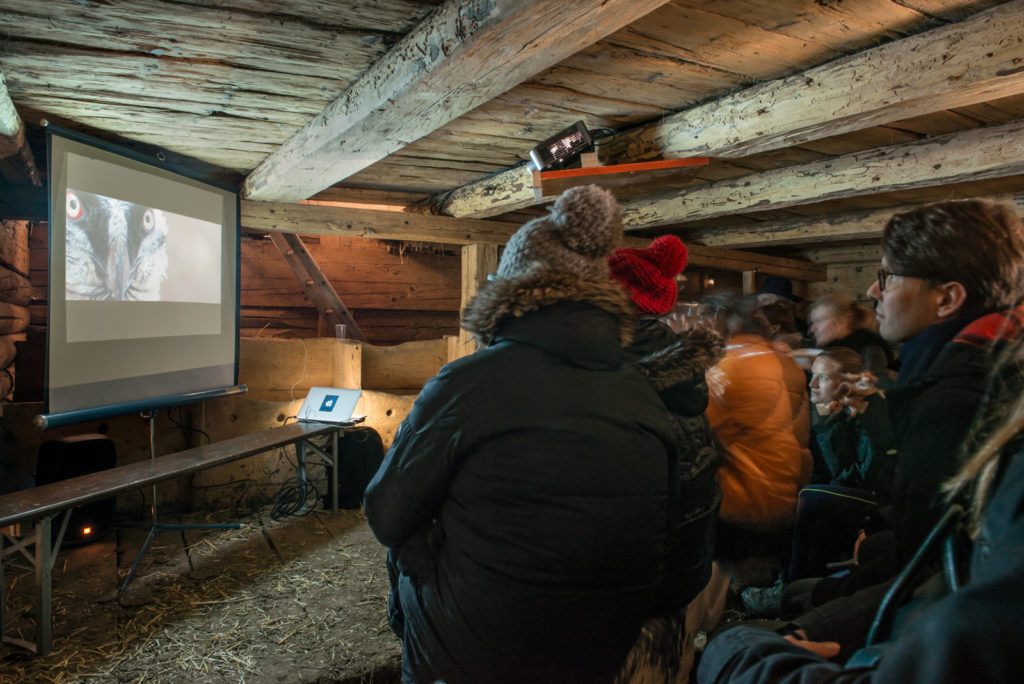
Superflex, The Return of Pablo (2017). Courtesy of the artist and LUMA Foundation. Photo: Stefan Altenburger.
During the opening of “Avalanche,” the impressive roster of historical and current residents was joined by artists Hope Atherton, Haley Mellin, and Michèle Lamy, alongside glittering local and international collectors for performances and receptions in chalets (including Vieux Chalet, Bardot’s infamous home) and hotels. Most of the sculpture, installation and video work by the exhibition’s international program of eleven artists and collaborative teams, including Cecilia Bengolea, Ryoji Ikeda, Sarah Morris and Thomas Schutte, will remain situated outside in the snow, wind and extreme elements.
Wakefield is seasoned at shepherding challenging art away from pristine interiors and into the elements. His impetus to collaborate with Scarry on a series of immersive, durational, site-specific, shows demonstrates qualities recognized by Dan Attoe, an artist whose magnificent paintings of imaginary landscapes evoke Gstaad, and who showed with Wakefield this past summer in Aspen. Attoe describes Wakefield’s curatorial character as “his humble demeanor not letting on the depth of his involvement in contemporary culture. He can get to things other curators can’t because he approaches in a very unassuming way. He asks questions and tells stories that get at the substance of things.”
The essential principle of “Avalanche” makes viewers aware that art is often cloistered indoors, in contrast to nature. As Wakefield explains, the art is held in secret while everyone talks about the beauty outside. “A lot of art-making is about trying to reduce the background noise,” says Wakefield, “whereas here, it is the background that you’re being asked to listen to. It is not only about the art itself. The art acts as a signal to make you look at the things around you.”
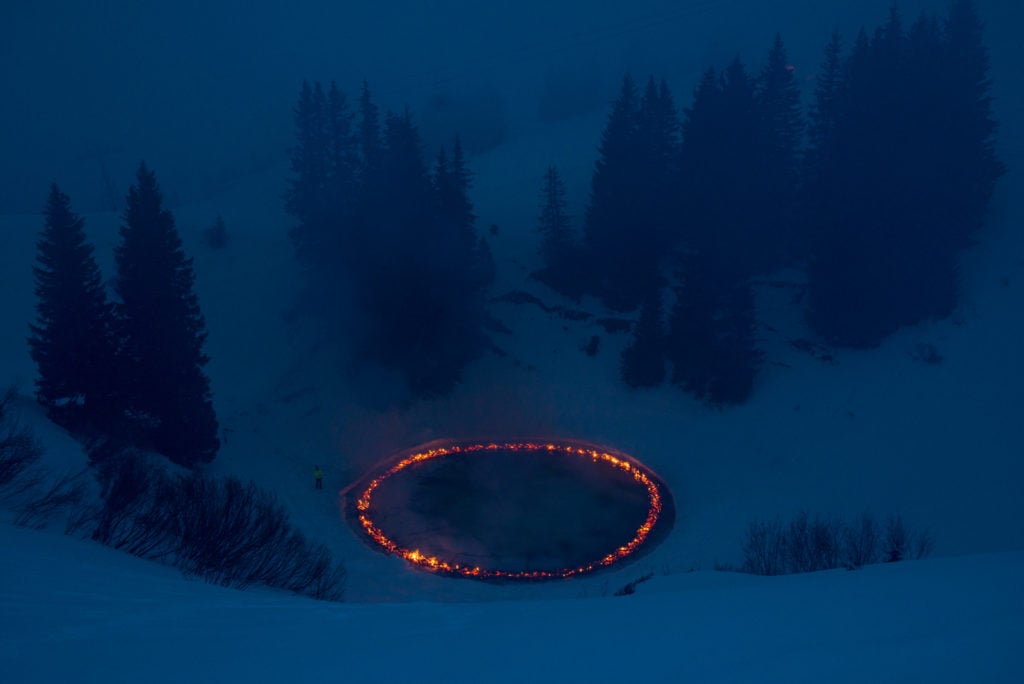
Douglas Gordon and Morgane Tschiember, As close as you can for as long as it lasts (2017). Courtesy of the artist and LUMA Foundation. Photo: Stefan Altenburger.
The work that most effectively rivaled its surroundings also felt the most organic. An epic expression of romantic love between artists Douglas Gordon and Morgane Tschiember, As Close As You Can For As Long As It Lasts (2017) is a massive ring of fire burning, coupled with wolves’ howling. Seen from the top of a ski slope, positioned at the Iglu Dorf ice hotel, this ongoing flame was inspired by the couple’s long-distance romance and mutual fascination with how sound carries through the vast mountain range. By pairing snow with fire, they create a primal awareness of danger, wonder, and natural power inspired by the show’s title. Musing on the meaning of “avalanche” as a metaphor for love, Gordon expressed his visceral fear and awareness that, in an intense landscape, “you don’t travel alone. If something happens, then you need to cling to someone to survive.”
On the opposite side of emotional redemption is Rosa, Michaël Borremans’s disarmingly strange sculpture. Situated behind humble farm houses on open field, Rosa brings one of the hooded characters from the Belgium artist’s Black Mould series headfirst into the snow. Enormously tall with bare feet splayed, the genderless, faceless, figure who looks dropped from a private jet or the mountain’s heights (maybe by Pablo) wears potentially ecclesiastical garb but also bares a passing resemblance to the torture victim in the infamous photos leaked from Abu Ghraib. Whether a political statement or friendly surrealist gesture, Borremans’s sculpture highlights how fragile and small all human activity feels in such an intense landscape.
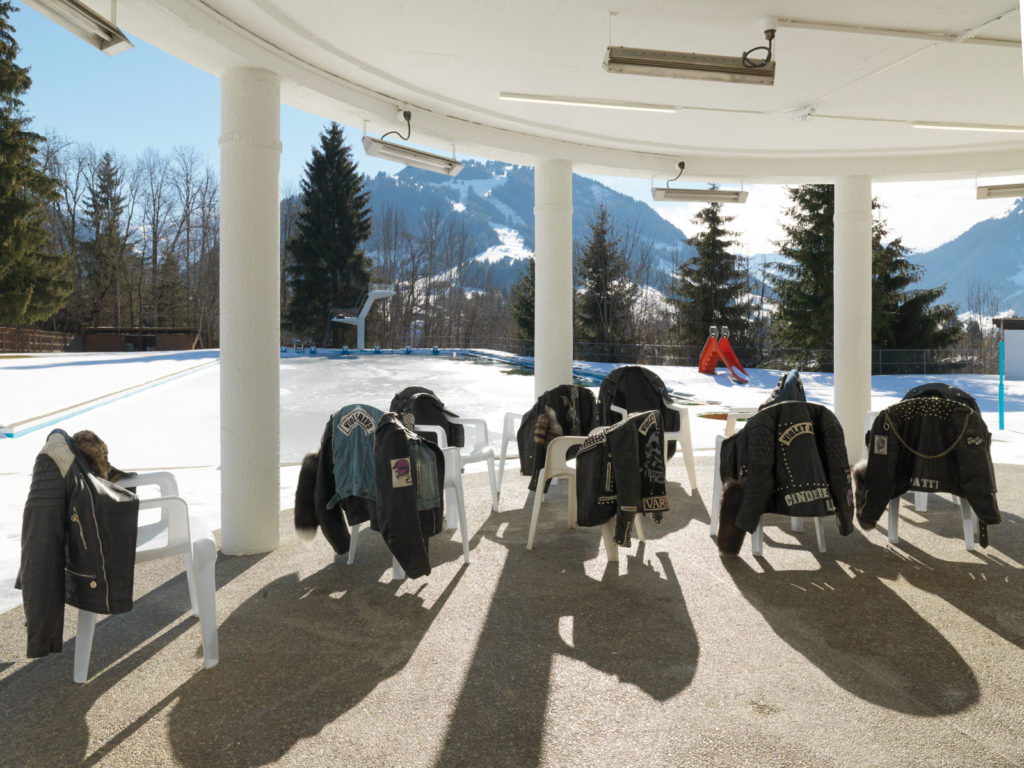
Nicole Wermers, The Violet Revs (2017). Courtesy of the artist and LUMA Foundation. Photo: Stefan Altenburger.
A different, more human, threat is embodied by Nicole Wermer’s brilliant unassuming installation at the residents’ pool of the legendarily-chic Gstaad Palace. Instead of leaving a lynx or chinchilla coat on a chair, where it might go unnoticed, for The Violet Revs (2017), Wermer gathered weathered leather biker jackets around the pool’s lounging area. Attributed to a fictional lesbian biker gang, the abandoned garments allude to potentially threatening others invading Gstaad to prey, as Pablo’s human familiars. While “Avalanche” was conceived as collaboration between the artists and nature, the possibility of outside reality encroaching on and toppling Gstaad’s peace and majesty is this durational show’s disquieting subtext.